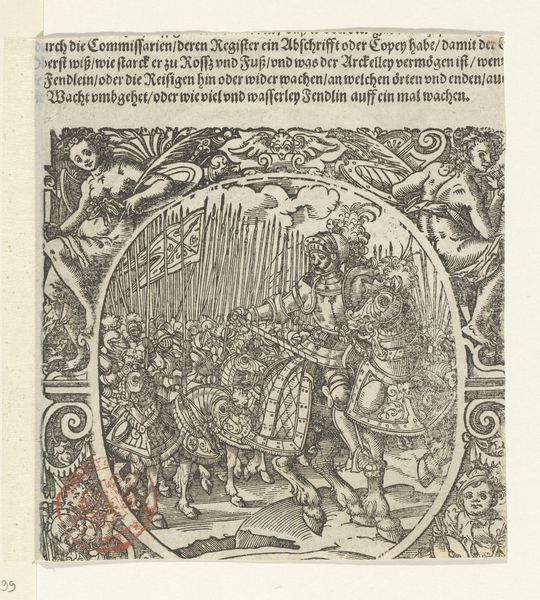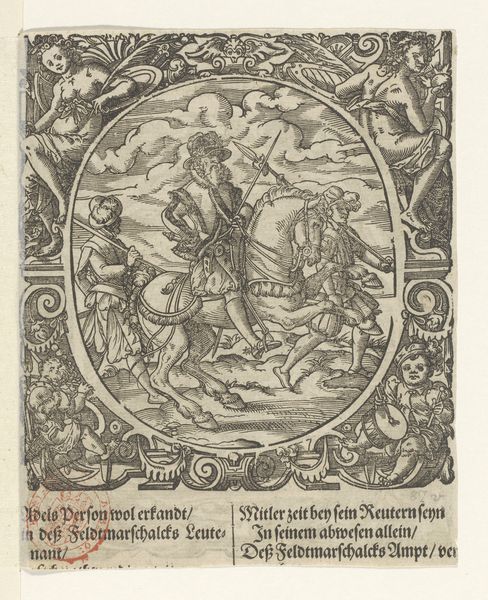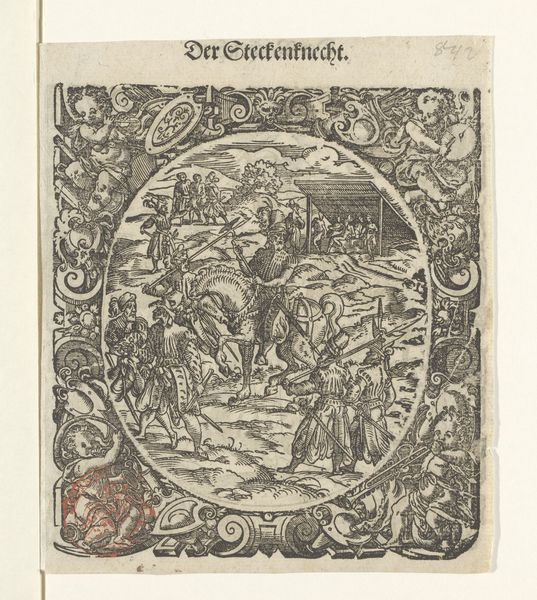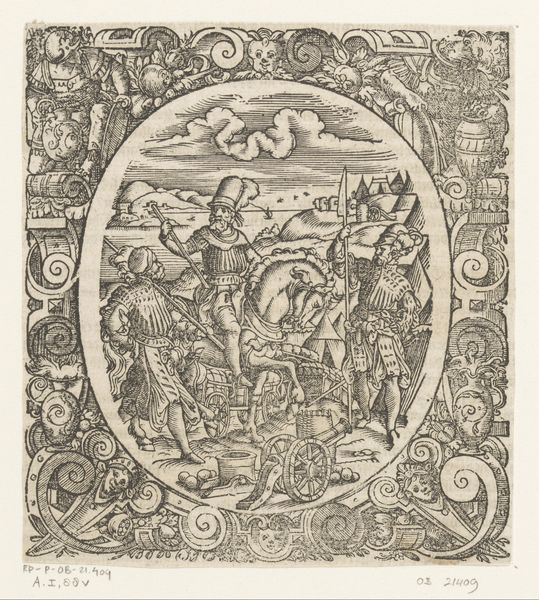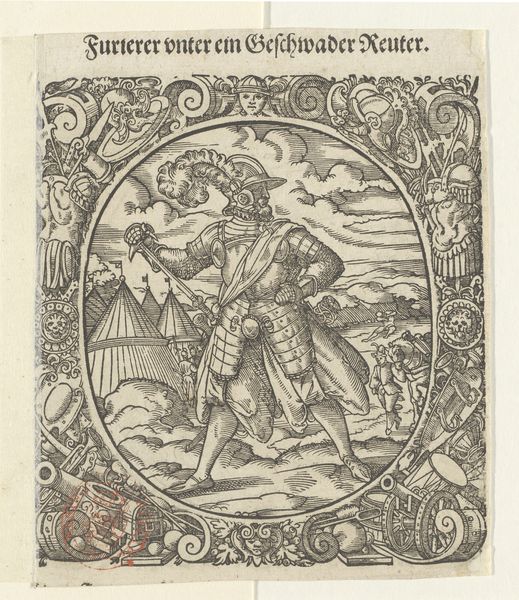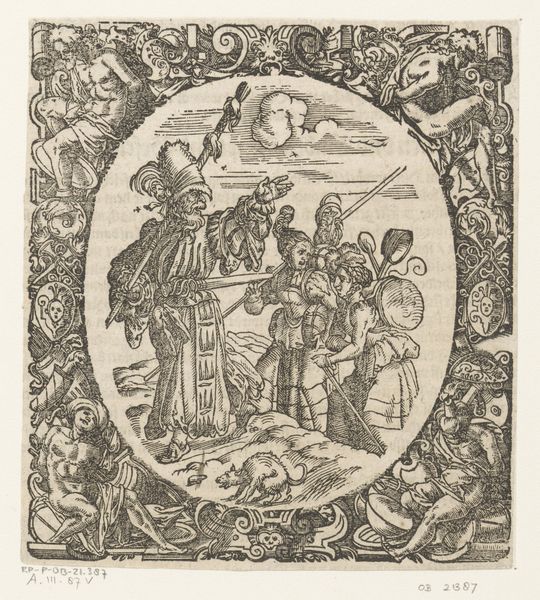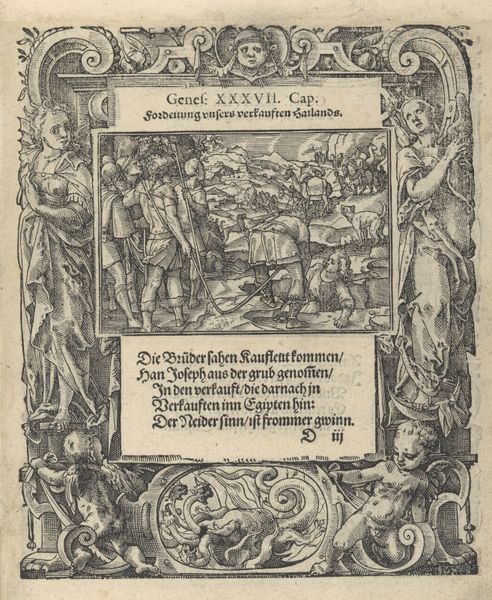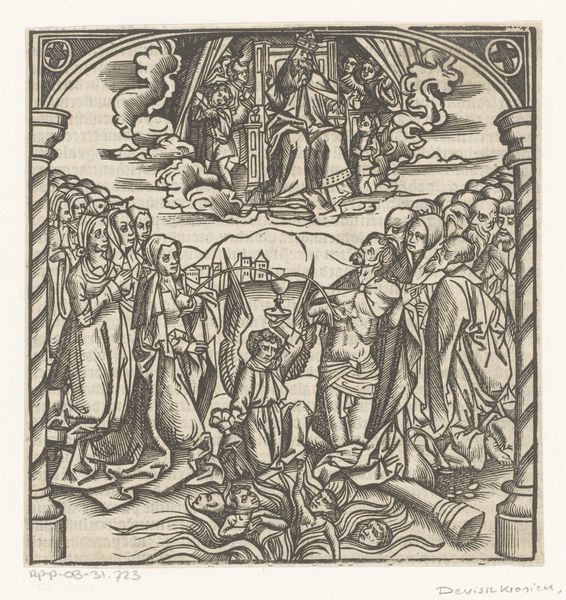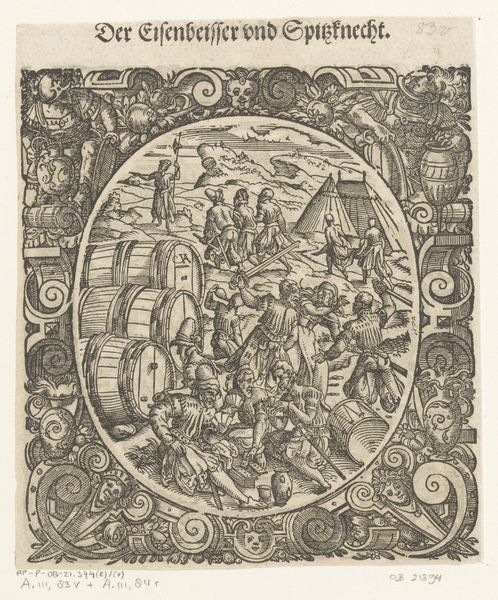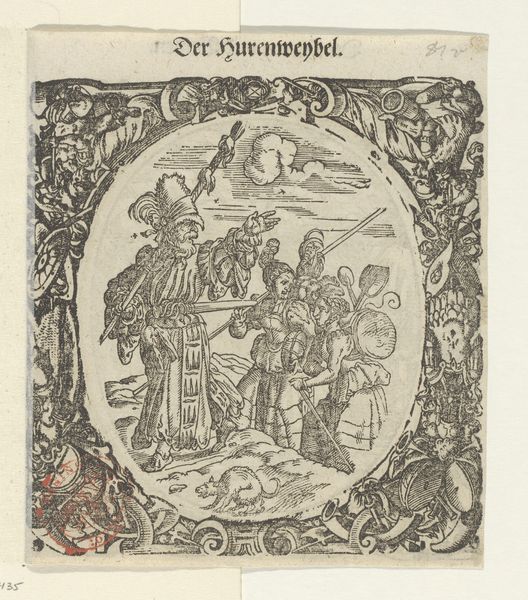
print, woodcut, engraving
#
narrative-art
# print
#
figuration
#
woodcut
#
history-painting
#
northern-renaissance
#
engraving
Dimensions: height 148 mm, width 132 mm, height 114 mm, width 97 mm
Copyright: Rijks Museum: Open Domain
Curator: Jost Amman’s “Veldmaarschalk te paard,” or “Field Marshal on Horseback,” made in 1573, captures a pivotal moment in military history. The work resides here at the Rijksmuseum. Editor: It’s striking—almost chaotic. All these incredibly detailed figures swirling around in such a small space… You feel the intensity immediately. Curator: Absolutely. Consider the context: the rise of professional armies in 16th-century Europe. Amman's woodcut speaks to the era's valorization of military leadership. The figure is framed by intricate decorative elements typical of Northern Renaissance prints, embedding it within the culture. Editor: Yes, and the woodcut medium itself—so labor-intensive, demanding skill and precision—emphasizes the value placed on craft. Look at the individual lines used to create depth. Curator: Precisely. These prints played a crucial role in disseminating visual propaganda. Disseminating images of military prowess not only bolstered morale but also justified the enormous expense of maintaining standing armies. Editor: The amount of detail carved into each block… one mistake, and the whole thing could be ruined. Think of the cost and availability. Was this just a wealthy person's art or was it displayed publicly? Curator: The proliferation of printmaking made images like these widely accessible, not solely confined to elite circles. This one certainly would have been viewed to show prestige. Editor: Knowing more about the materiality really transforms my experience. To imagine the process of labor transforming raw materials. You think this imagery was viewed and believed in wholeheartedly? Curator: The image’s effectiveness relied on the prevailing cultural and political climate. With ongoing conflicts and a deeply entrenched military-religious complex, images reinforcing military virtues often resonated strongly. Editor: Well, I won't soon forget the physical toil and the economic investment needed to produce art in 1573. Curator: It highlights how even seemingly simple artworks encapsulate so much about society, politics, and culture of their era.
Comments
No comments
Be the first to comment and join the conversation on the ultimate creative platform.
